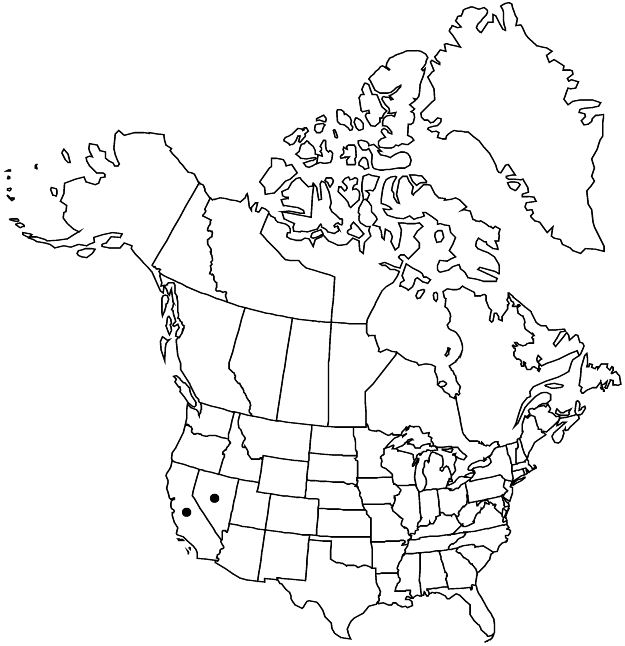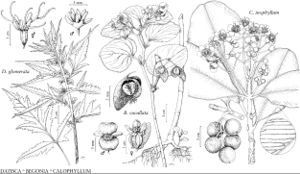Difference between revisions of "Datisca glomerata"
Hist. Pl. 3: 407. 1871.
FNA>Volume Importer |
imported>Volume Importer |
||
| Line 59: | Line 59: | ||
|publication year=1871 | |publication year=1871 | ||
|special status=Illustrated | |special status=Illustrated | ||
| − | |source xml=https:// | + | |source xml=https://bibilujan@bitbucket.org/aafc-mbb/fna-data-curation.git/src/bb6b7e3a7de7d3b7888a1ad48c7fd8f5c722d8d6/coarse_grained_fna_xml/V6/V6_97.xml |
|genus=Datisca | |genus=Datisca | ||
|species=Datisca glomerata | |species=Datisca glomerata | ||
Revision as of 23:44, 27 May 2020
Plants erect, 1–1.5(–2+) m. Rootstock: inner bark yellow. Stems 1–30+ from base, glabrous. Leaves often appearing subopposite to semiwhorled proximally, gradually smaller distally, simple to asymmetrically laciniate-pinnate or shallowly pinnatifid to incised-trifoliolate, lobes deeply cleft; petiole 2–4 cm; blade lanceolate to ovate, 6–20 × 1–13 cm, margins coarsely serrate, apex acuminate to long-acuminate, surfaces glabrous. Flowers: staminate: calyx 2 mm, lobes slender, 0.2–1 mm; stamens borne on rim of calyx, nearly sessile or filaments to 1 mm; anthers yellow, 3–5 mm; bisexual: hypanthium 5–8 mm; calyx lobes narrow, 1–2 mm; ovary usually 3-angled; pistillate: rare, similar to bisexual flowers. Capsules ovoid-oblong, 7–11 mm, apex truncate. Seeds ellipsoid, 0.8–1 mm, pitted in longitudinal rows.
Phenology: Flowering late Apr–Aug.
Habitat: Dry streambeds and washes, springs, wet sand, moist areas
Elevation: 10–2000 m
Distribution

Calif., Nev., Mexico (Baja California).
Discussion
Flowers of Datisca glomerata are primarily bisexual, each bearing one to four or more stamens. An occasional plant bears only staminate flowers. Pistillate flowers are rare and no plants with only these have been observed.
All parts of the plant are reportedly poisonous and have shown some antitumor activity. The species is sometimes cultivated as an unusual ornamental.
The combination Datisca glomerata sometimes has been attributed to (C. Presl) Bentham & Hooker f.; it was not validly published by those authors.
Selected References
None.
